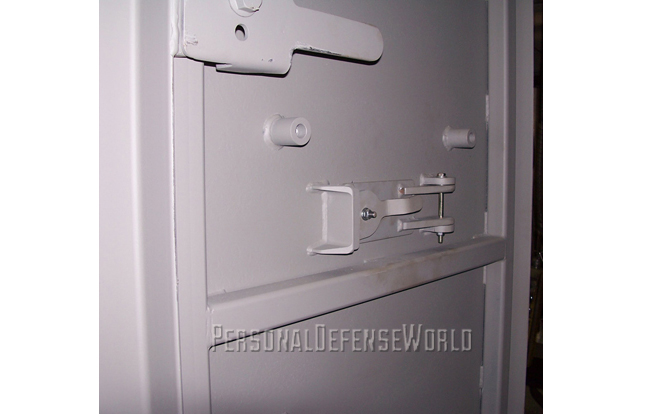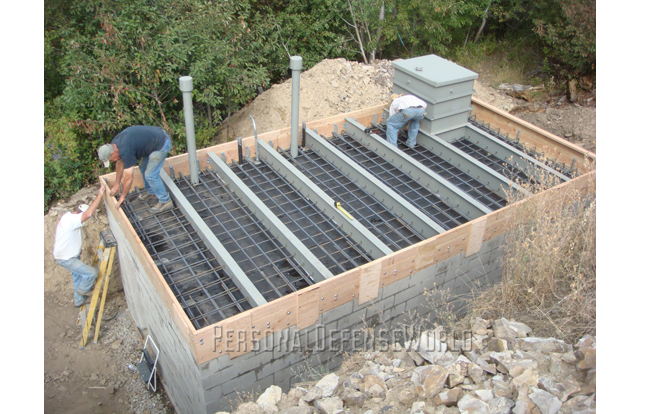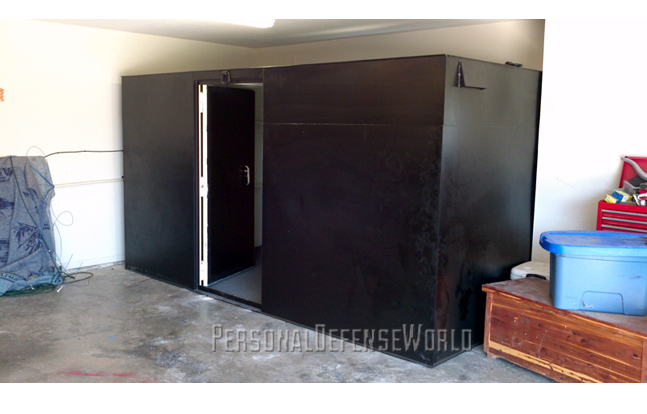Safe rooms are hardened structures built within a home to protect the occupants from either extreme weather events, WMDs or criminal assault. Safe rooms are not to be confused with storm shelters accessible only by passage outside the home. Storm shelters may serve an identical purpose, but a safe room’s location within the living quarters and its immediate accessibility is a major advantage because home invaders, kidnappers and assassins don’t make advance reservations. In short, the safe room is the homeowner’s last stand.
Shelters designed for protection against natural disasters are generally less elaborate and involve different considerations than those used as a citadel against home invaders. Location outside the home is sometimes preferred, and provisions to protect against flooding, fire or wind will drive the location and design. Consult FEMA publication 320, “Taking Shelter From the Storm: Building a Safe Room in Your House.” Funding through FEMA is also available for certain storm shelters.
Unlike storm shelters, the existence and design of a safe room built to stop a criminal attack should be kept completely secret. Safe rooms should be noted as “mechanical” or “utility” rooms on design plans filed with the municipality’s building department, and security features should be added after construction and codes compliance inspection is completed. Where rooms require work that gives obvious hints of target hardening, such as tunnels, excavation or interior concrete, it’s advisable to only hire out-of-town firms and fabricate a plausible cover story such as building a wine cellar. Designers and builders with a need to know should sign confidentiality agreements.
Advertisement — Continue Reading Below
Don’t buy into the illusion that a safe room is invincible. It isn’t, and other means to secure your castle should be employed. Moreover, a safe room only works according to plan if everyone in your household can access it quickly and it holds long enough until police arrive or the threat aborts its attack. Ideally, the room will make you secure and in control during an attack, but what’s ideal isn’t always realistic.
Key Safe-Room Features
In his article “Notes on Tactical Residential Architecture,” Jeff Cooper never mentions safe rooms, probably because he did not subscribe to “the doctrine…that one covers up, keeps his head down and calls the police.” Cooper knew the police could not be counted on to save you. He was a proponent of design features that gave the homeowner a tactical advantage such as visibility of a possible assault from every angle of the home’s exterior, bulletproof walls and window shutters, and protective measures inside the house such as hallway gates and doors that would wake a sleeping occupant if a breach were attempted. He also advocated means (e.g., gun ports) to launch an effective counterattack with firearms against threats outside or inside the house.
The fundamental question in safe room design is to identify which threats need to be protected against and for how long the room should hold. On one end of the continuum is a hidden, walk-in closet whose walls and ceiling are made of thick plywood, with a steel fire door for protection against what Cooper astutely called “the casual savage.” On the other end is a poured-concrete vault with a blast door and hatch, plumbing, a generator, and a HEPA ventilation system to filter nuclear, biological and chemical particles.
Advertisement — Continue Reading Below
Besides having breach-resistant walls, ceilings and floors and a hidden entrance that opens only from the inside, the more elaborate safe rooms have features that make them defensible against direct attack. Hidden cameras, microphones and thermal detection devices throughout the house allow the occupants to furtively surveil intruders and remotely deploy countermeasures to drive them away. These include ear-piercing sirens, flashbangs, chemical irritants, smoke/fog, electrical shock devices under carpets and energizing door handles. One safe room found during my research employed lethal countermeasures: a ceiling bristling with over a dozen hidden, remotely triggered, downward-pointing firearms. Passive means of defense can also help and may not be as expensive, such as remote-controlled lights and door locks to trap intruders, and decoy electrical panels and air ducts to throw off attempts to compromise the safe room. Gun ports are also an option but require room for you to sight as well as shoot and can become a vulnerability to an otherwise seamless protective wall.
The design of any safe room should also consider communications, electricity, ventilation, supplies and means of escape. Safe rooms should have backup communications to alert police if landlines are cut or cellphones do not work within them. HAM and CB radios or a direct line to the police or a security firm are options. Ventilation systems that filter out nuclear, biological and chemical contaminants are available, while the most expensive systems use oxygen scrubbers to replenish air in an airtight room. Air supply can also be supplemented with oxygen masks for emergencies. Electric power should be supplied on a hidden or buried cable with a generator having exhaust venting or batteries as backup. If the safe room needs to be occupied for more than several hours, water and plumbing may be necessary. Simple waterless toilets and bottled water may suffice, but retaining tanks will be required for several occupants or extended stays. Supplying the safe room is based on a person’s individual plan and anticipated threats, but some essentials cannot be ignored, namely, fire extinguishers, medical supplies, water, food and weapons.
Finally, and not least important, a safe room can turn into a tomb without an emergency escape. Escapes are typically smaller passageways such as tunnels or crawlways and should lead the occupants to an area not likely to be observed by a surrounding or intrusive force. Note that because of their size and typical use of ladders, escape passages can be problematic if evacuating the injured or infirm is necessary. For more on FEMA’s Safe Room Funding, visit fema.gov/safe-room-and-community-shelters-funding-and-initiatives/safe-room-funding.
Advertisement — Continue Reading Below
BUY NOW! AT www.personaldefenseworld.com/subscribe/personal-home-defense/.
































